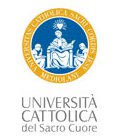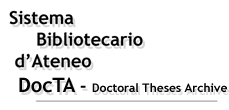|
|
DocTA - Doctoral Theses Archive >
Tesi di dottorato >
SCUOLA DI DOTTORATO IN SCIENZE LINGUISTICHE E LETTERARIE >
Citazione:
Utilizza queste indicazioni per citare o creare un link a questo documento.
|
Alborghetti, Claudia. "IMAGES AND VOICES OF GIANNI RODARI IN ENGLISH TRANSLATION", Università Cattolica del Sacro Cuore, XXVIII ciclo, a.a. 2014/15, Milano, [http://hdl.handle.net/10280/10791].
|
| Titolo: | IMAGES AND VOICES OF GIANNI RODARI IN ENGLISH TRANSLATION |
| Autore/i: | ALBORGHETTI, CLAUDIA |
| Tutor: | ULRYCH, MARGHERITA |
| Coordinatore: | LIANO, DANTE JOSE' |
| Lingua: | ENG |
| Abstract in italiano della tesi: | La ricerca studia le riscritture delle opere di Gianni Rodari (1920-1980) in traduzione inglese attraverso la mediazione degli editori, critici letterari ma soprattutto dei traduttori tra il 1960 e il 2011. Nell’ambito degli studi sul contesto di produzione delle opere tradotte (Bassnett & Lefevere, 1998; Chesterman et al., 2000), la prima parte della ricerca presenta le caratteristiche traduttive della letteratura per l’infanzia attraverso un’analisi retrospettiva (Toury, 2012) utile a contestualizzare le opere di Rodari in inglese per il pubblico Anglo-Americano. La seconda parte illustra la mediazione linguistica dei traduttori in quattro di queste opere in inglese a partire dagli S-Universals (Chesterman, 2004). L’analisi delle traduzioni di Patrick Creagh (1965, 1971), Jack Zipes e Antony Shugaar (2008, 2011 rispettivamente), condotta attraverso le nove categorie traduttive proposte da J. L. Malone nel 1988, ha mostrato diversi gradi di addomesticamento ed estraniamento traduttivo (Venuti, 1995) a seconda dell’età del pubblico ricevente. Specificamente, le traduzioni addomesticanti si sono rivelate creative al punto da avvicinarsi all’intento narrativo di Rodari nei testi originali. La traduzione estraniante di Shugaar del 2011 ha mantenuto i riferimenti alla cultura italiana del testo rodariano, mostrando un cambiamento di pubblico ricevente dal testo fonte (pubblico giovane) al testo di arrivo (adulti). |
| Abstract in inglese: | The research investigates the extent to which Gianni Rodari’s (1920-1980) works changed in their English translations through the mediating presence of publishers, reviewers, and especially translators between the 1960s and 2011. With reference to the cultural context of production of translated works (Bassnett & Lefevere, 1998; Chesterman et al., 2000), translational patterns of children’s literature were firstly studied from a retrospective point of view (Toury, 2012) to contextualise Rodari’s books in English in the UK and the US. Secondly, the intervention of translators in four of these books was analysed within the mediation framework provided by S-Universals in translation (Chesterman, 2004). The discrete analysis of the translations by Patrick Creagh (1965, 1971), Jack Zipes and Antony Shugaar (2008, 2011 respectively), based on the nine translational trajections identified by J. L. Malone (1988), showed that the translators adopted different foreignising and domesticating strategies (Venuti, 1995) according to the intended public. More specifically, domesticating strategies presented a high degree of creativity in line with Rodari’s original narrative purpose, whereas Shugaar’s foreignising translation (2011) retained references to the Italian culture as in Rodari’s source text, marking a shift of audience from children to adults, from the Italian to the English target text. |
| Data di discussione: | 17-mar-2016 |
| URI: | http://hdl.handle.net/10280/10791 |
| È visualizzato nelle collezioni: | SCUOLA DI DOTTORATO IN SCIENZE LINGUISTICHE E LETTERARIE
FACOLTA' DI SCIENZE LINGUISTICHE E LETTERATURE STRANIERE
|
File in questo documento:
| File |
Descrizione |
Dimensioni | Formato | Accessibilità |
|---|
| tesiphd_completa_Alborghetti.pdf | TESI COMPLETA | 2,42 MB | Adobe PDF | Visualizza/apri
|
|
Accesso e utilizzo dei contenuti di DocTA
|



